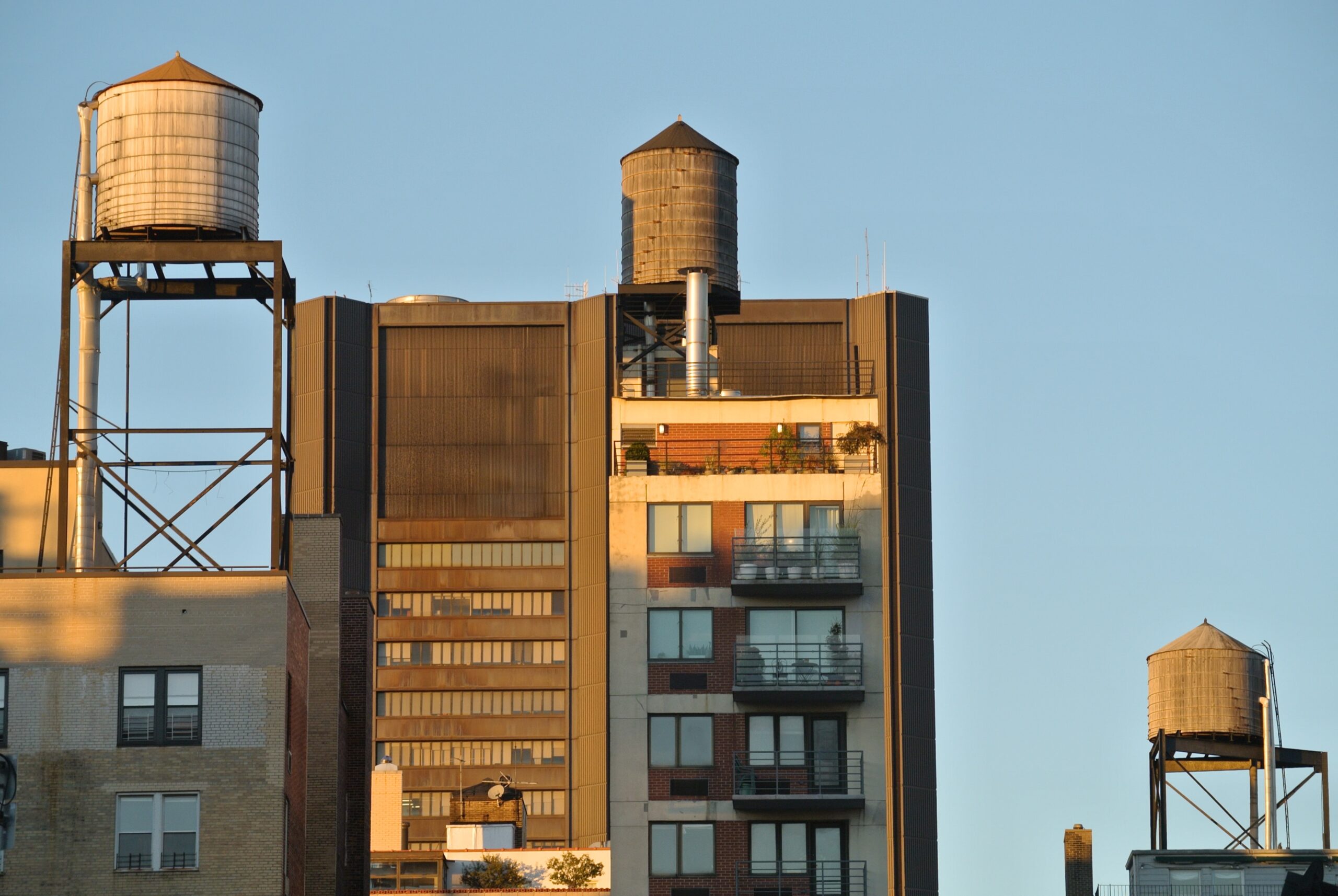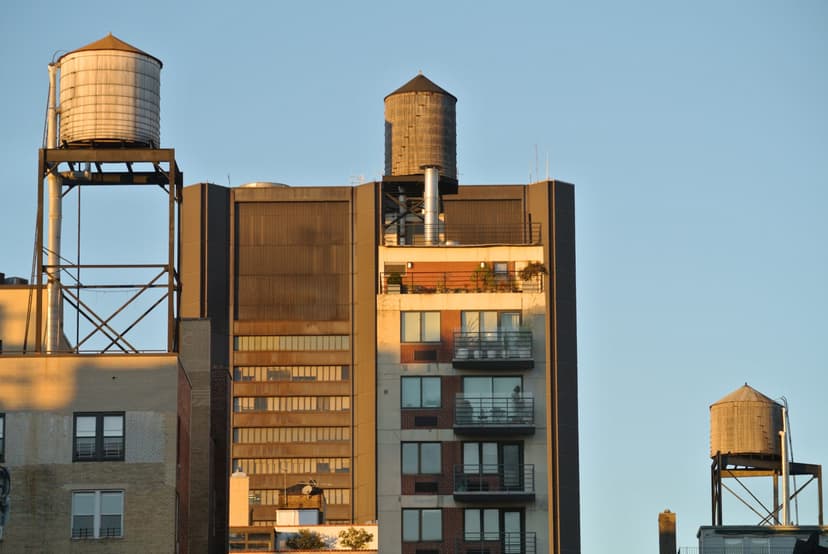
New York City's Most
Outdated Building Code?
If you've ever looked up at the New York City skyline and wondered why some of the world's most expensive real estate is topped with what looks like oversized wine barrels, you're not alone. The answer involves 140-year-old physics, municipal regulations, and a building code that has remained unchanged since the 1880s.
The Physics Problem
New York City's skyline presents a unique contradiction: luxury penthouses worth millions of dollars are crowned with wooden water tanks that appear distinctly out of place among modern glass and steel construction. These structures serve a critical function that most residents never consider.
Those wooden cylinders dotting every rooftop from the Financial District to Harlem are water tanks, approximately 17,000 of them citywide, and they exist because of one fundamental engineering limitation that city planners discovered over a century ago: water pressure has natural limits.

Water pressure systems can only naturally push water upward approximately 60 feet. Beyond that height, additional mechanical assistance is required to deliver water to upper floors.
During New York's major building boom in 1880, developers encountered this physical limitation as buildings began exceeding six stories. Without adequate water pressure, upper floors in taller buildings would lack reliable water service, creating significant habitability issues.
City officials addressed this challenge by implementing a regulatory solution: any building over six stories must install a rooftop water tank system. The approach involves pumping water to an elevated storage tank, then using gravity to distribute water throughout the building with sufficient pressure for all floors.
A 140-Year Regulatory Legacy
This emergency infrastructure solution, implemented 140 years ago, remains mandatory under current New York City building codes. The regulation applies uniformly across all construction projects, regardless of technological advances in water delivery systems.
New commercial high-rises, residential developments, and building renovations exceeding six stories must all comply with the rooftop water tank requirement. This creates a unique situation where 21st-century architectural projects incorporate 19th-century water delivery technology.
Other major American cities, including Chicago, Los Angeles, and Miami, have modernized their infrastructure to use high-pressure pump systems and underground distribution networks. New York City, however, has maintained its original regulatory approach without significant modification.

The water tanks that crown New York's buildings are primarily constructed from cedar wood, secured with steel hoops using traditional cooperage techniques. These structures typically hold between 5,000 and 10,000 gallons of water, weigh approximately 50,000 pounds when full, and cost between $25,000 to $65,000 to install.
Installation involves crane-assisted assembly on building rooftops, where specialized workers construct the tanks using pre-manufactured wooden staves. The process requires expertise in traditional barrel-making techniques, a skill set that has been preserved primarily within a small number of specialized contractors.
The tanks require regular maintenance including annual inspections, periodic cleaning, and eventual replacement approximately every 30 years. Building owners must budget for ongoing water tank maintenance as part of their standard infrastructure costs.
Industry & Urban Impact
The water tank industry in New York City operates with remarkable concentration, dominated by three family-owned businesses that have maintained operations since the 1890s. Isseks Brothers (established 1890), Rosenwach Tank Company (1896), and American Pipe & Tank control virtually the entire market for wooden water tank installation and maintenance.
This market structure has persisted across multiple generations, with specialized knowledge and techniques passed down within these companies. The barriers to entry are substantial, requiring expertise in traditional construction methods, regulatory compliance knowledge, and established relationships within the city's building industry.
One of these companies reports working on approximately 90% of all New York City water tanks, indicating significant market dominance within this specialized sector.
The visual contrast between modern architectural design and traditional water storage creates a distinctive aspect of New York's skyline. Contemporary glass and steel constructions are routinely topped with wooden structures that employ centuries-old construction techniques.
This juxtaposition has become an accepted element of the city's urban landscape, with the tanks appearing regularly in films, television productions, and photography as recognizable symbols of New York architecture. What originated as a practical engineering solution has evolved into an inadvertent design signature.
Building owners must account for water tank placement in their architectural planning, ensuring structural support and roof access while maintaining the building's aesthetic integrity where possible.
Alternative Approaches
Periodic discussions arise regarding potential modernization of New York's water delivery infrastructure to align with systems used in other major metropolitan areas. However, such changes would require substantial capital investment and comprehensive regulatory reform. The current system, while seemingly antiquated, provides reliable service with relatively low ongoing operational costs.
The Path Forward
New York City's rooftop water tanks represent a unique example of regulatory persistence and infrastructure continuity. A building code implemented in response to 1880s engineering limitations continues to shape the city's skyline and influence construction practices across all five boroughs. These structures serve as a reminder that effective infrastructure solutions need not always embrace the latest technology - sometimes, older approaches that have proven reliable over time continue to serve their intended purpose effectively.
Better tools for a better built world
Understanding infrastructure requirements and building codes is crucial for modern construction projects. Discover how advanced research tools like Atria can help architects and developers navigate complex regulatory requirements and make better-informed decisions from the earliest stages of design.